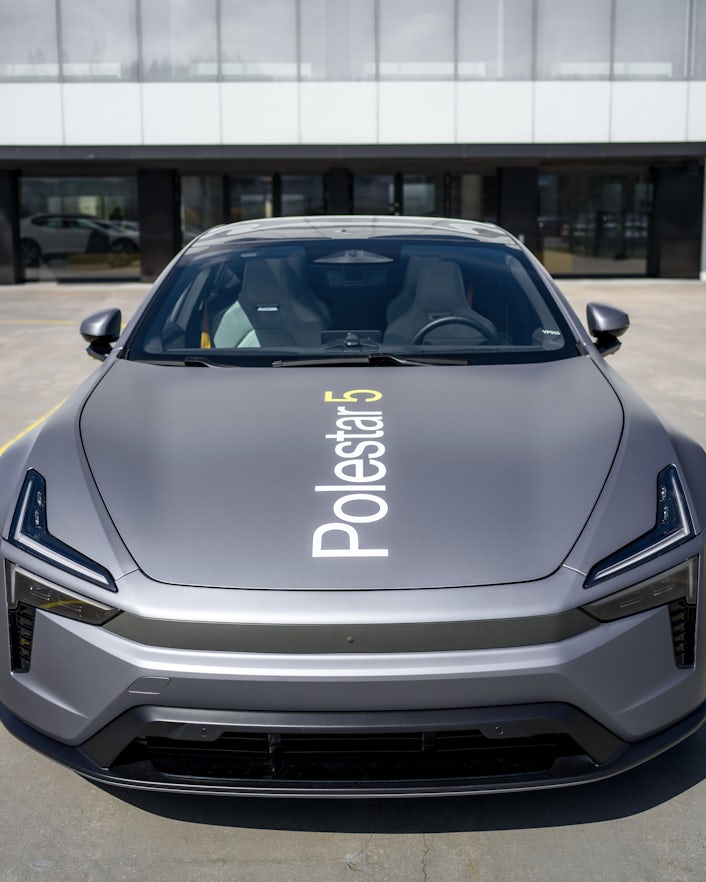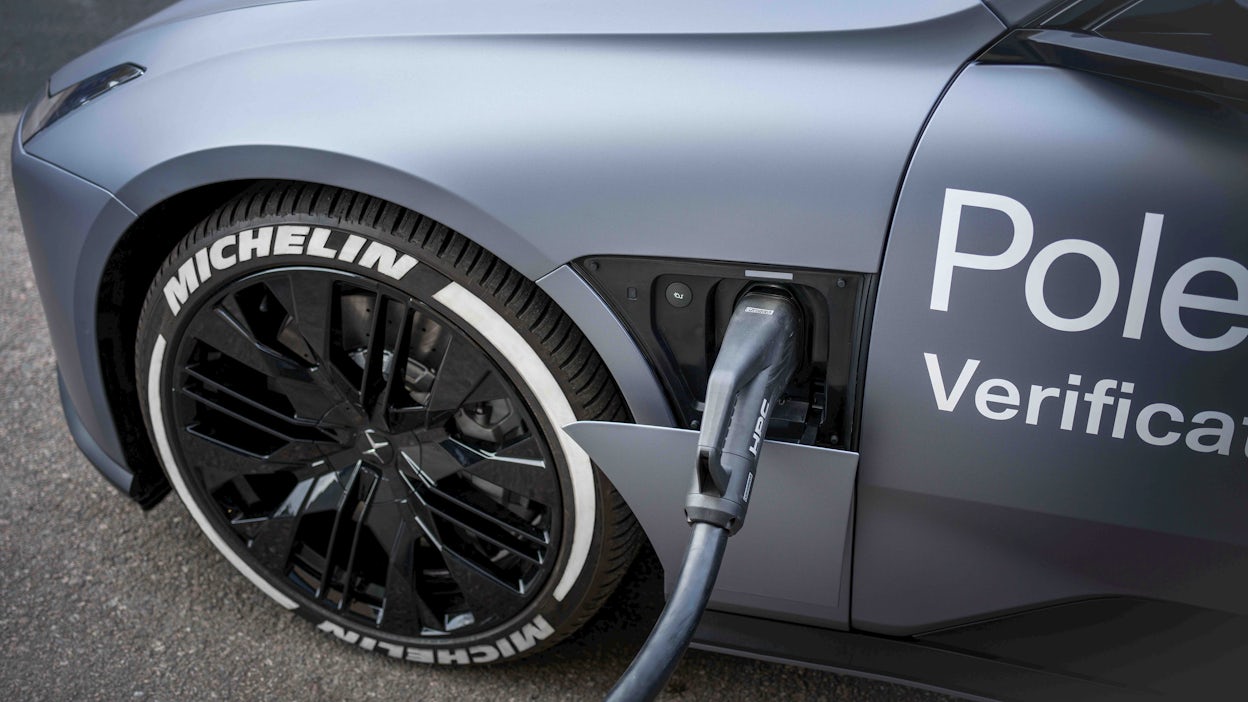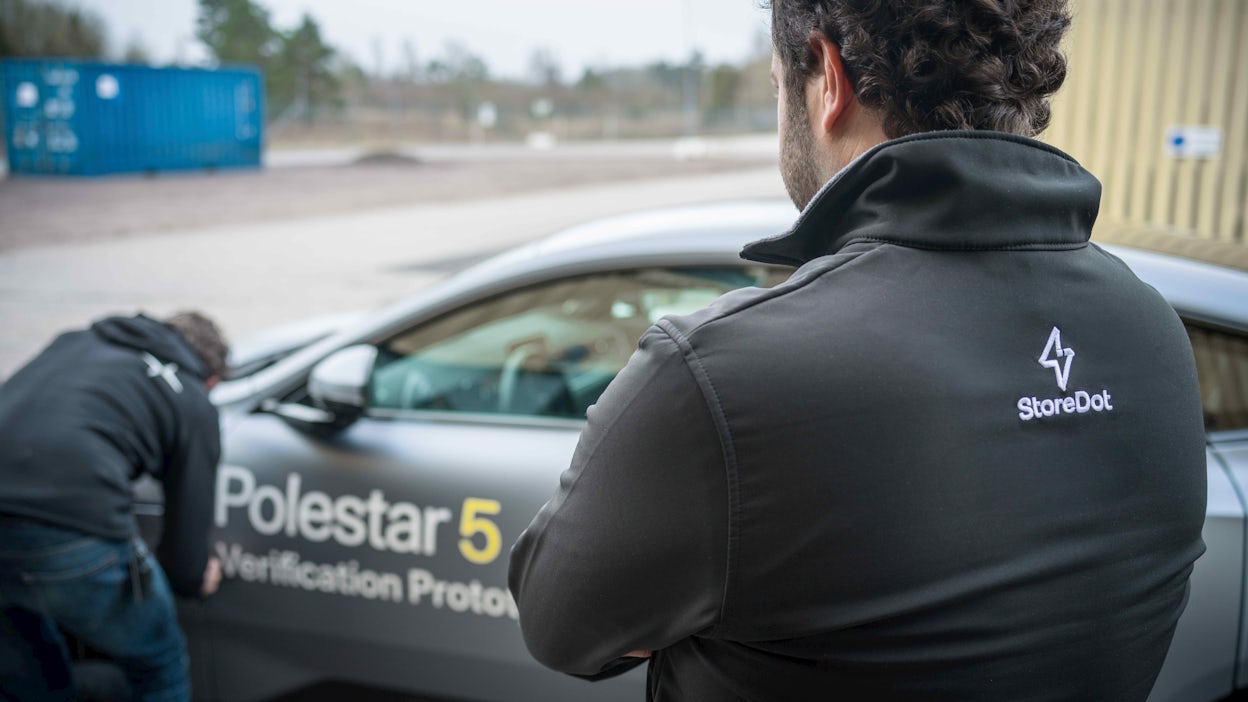How we charged a Polestar in 10 minutes — and why it’ll change the EV landscape forever
A prototype Polestar 5 brought extreme fast charging a step closer following the successful demonstration of the company’s next-generation battery pack. Using StoreDot’s unique silicon-based cells, the test achieved charging speeds in excess of 350 kW. We spoke to Polestar Battery System Chief Engineer Jens Groot to discover how charging history was made on Sweden’s west coast.
What we did this month is a world first
"It's clear that charging and range anxiety are the most significant concerns that hold people back from switching to an EV," Thomas Ingenlath, Polestar CEO, told a live audience in California, United States, late last year. With charging times rapidly decreasing and ranges sometimes topping 500 kilometres (including both Polestar 3 and Polestar 4), there is no better time to own an electric vehicle than today. But despite these continuing improvements, your typical EV charging session takes more time than filling your tank at the petrol station.
But that's all about to change.
Earlier this month, Polestar made a major breakthrough following the successful demonstration of its extreme fast charging capabilities. Using special battery cells provided by StoreDot, the world's leading advanced battery provider, a team of Polestar R&D battery specialists charged a prototype Polestar 5 battery pack from 10 to 80 percent in exactly 10 minutes. "What we did this month is, I believe, a world first. For a standard vehicle without any novel cooling systems, we are looking at charging speeds I haven't seen anywhere else. We reached consistent speeds of 310-380 kW," explains Jens.
While charging speeds above 300 kW are nothing new — testing on individual cells at these speeds is relatively common under special lab conditions — this month's demonstration is the first time a complete battery pack has been tested in a fully functioning car, without (and this bit is important) showing the eventual power reduction typically seen during charging. "This is proof that we can now charge at these speeds in a standard car. We didn't add anything new outside the battery pack. It still had the original cooling pump and fan," Jens says of the prototype Polestar 5.


We’ve changed the rules with our silicon-dominant anodes
Game changer?
This advancement in battery technology is made possible by Polestar partner StoreDot, who are utilising silicon-dominant battery cell technology. The transformation of conventional lithium-ion batteries has fundamentally altered how a battery works and, in turn, supercharged its capabilities. "Common EV cell chemistries address either energy or power requirements. We’ve changed the rules with our silicon-dominant anodes; we have developed long-lasting cells with both high energy and extreme fast charge capability," says Dan Corfas, Director of Product and System Engineering at StoreDot.
But top speeds aren't the only unique thing about this battery. Speed consistency has also received a massive upgrade. As any EV owner will tell you, charging speeds quickly tail off the closer you get to fully charging your vehicle. In fact, that final 20 percent charge (between 80 percent and 100 percent) of your standard lithium-ion battery can often take as long as the preceding 80 percent. What's interesting about StoreDot's silicon cells is that the charge speed doesn't change throughout the charging process.
"With this battery, it almost doesn't matter when you stop to charge your car. Whether you stop to recharge at 10 percent or 60 percent, you'll achieve the same speeds. In this sense, the experience is more like filling up your car at the petrol station. Because of that, this test really feels like a major step towards alleviating both range and charging concerns in customers. It definitely has the potential to be transformative," says Jens.
But when can we expect to see this type of battery in a Polestar? "We typically have a development cycle of two to three years, so I'd say we could put this into production within that time period."




01/02







